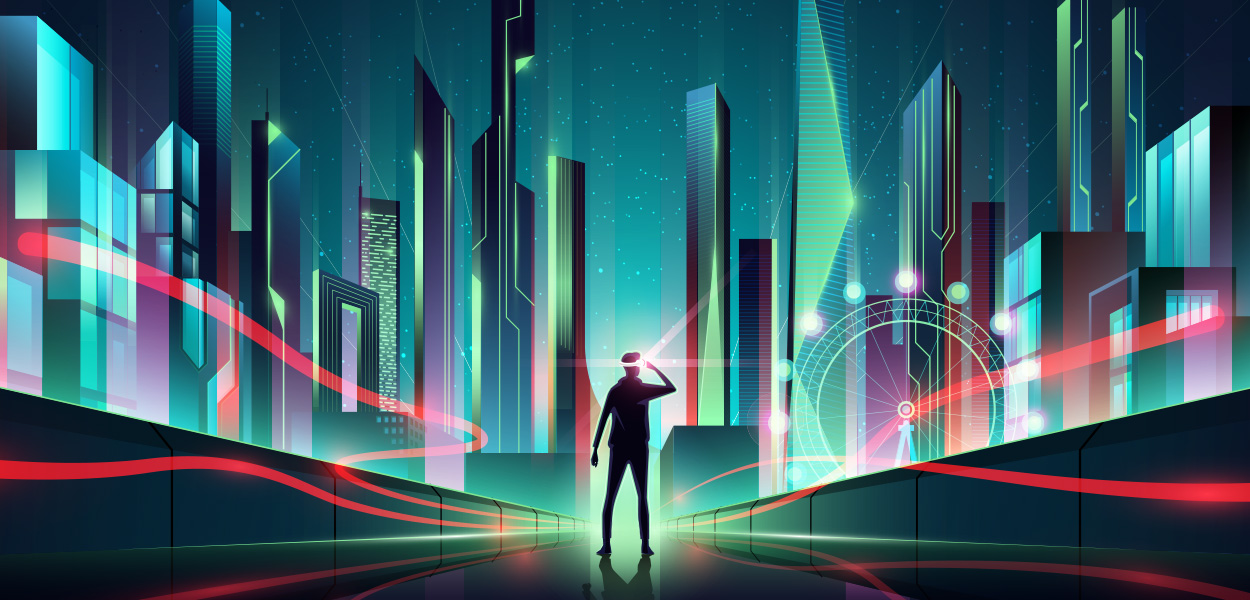
In recent years, the metaverse has become more commonly known as the “virtual world.” Thanks to VR, AR, and other related technologies, people are now able to explore digital spaces in a variety of different ways. As such, this new form of digital experience is also opening up new opportunities for marketers. With digital advertising continuing to grow and evolve at an alarming rate, it comes as no surprise that brands are starting to look for the next frontier. From virtual reality ads on billboards to augmented marketing experiences in stores and everything in-between, the potential for new and dynamic forms of marketing is endless. Read on to learn more about how the metaverse will soon impact advertising moving forward.
Virtual Reality Advertising
Virtual reality is a key element of the metaverse and has been closely tied to advertising ever since technology emerged. From its earliest days, VR has been tied to advertising, marketing, and branding for many different types of companies. The most obvious use of VR for brands is for product advertising and marketing. Brands are already exploring virtual shopping environments that allow customers to shop from their own homes and try on different products.
The technology is still in its infancy, but as it continues to advance, it will provide even broader opportunities for brands to create engaging shopping experiences for customers. Another way companies are using VR for advertising is for events, campaigns, and marketing initiatives. Many brands have already created VR experiences to promote their products and drive engagement. Organizations like UNICEF are even using VR to increase awareness and money for crucial initiatives worldwide. In addition to product and event marketing, companies are also using VR to create unique customer experiences and communications. From helping customers explore new products to creating training and safety simulations, VR is an excellent tool that allows brands to create truly one-of-a-kind experiences.
Augmented Reality Marketing
Augmented reality, or AR, is an increasingly popular marketing and advertising tool. If VR is the digital world you enter to explore the metaverse, then AR is considered as the digital world that is integrated into the real world. Augmented reality enables brands to create digital content that is “overlaid” on top of real-world objects in order to drive engagement. From informative information to sales and promotional offers, augmented reality can be used for a variety of different marketing purposes. Augmented reality can be used for product advertising in a way that is truly unique.
Product labels and packaging can be used to drive up engagement by enabling the consumer to access information about the product via their smartphone or other devices. As augmented reality becomes more advanced, brands are also likely to use it for product visualization. Imagine shoppers being able to visualize products in their own homes, or even try out different furniture and home design options before purchasing them. Brands can also use AR to create unique customer experiences. Imagine walking into a store, pulling out your phone, and having AR information and visuals appear to help you navigate the store, find products you’re interested in, and even check out.
Merging of Real and Virtual Worlds
One of the most exciting developments within the metaverse is the merging of real and virtual worlds. This is especially true when it comes to augmented and virtual reality. These technologies allow brands to create unique digital experiences that are woven together with the real world. The potential for this is endless, with brands being able to integrate VR and AR marketing initiatives into almost any type of real-world setting or event. For example, imagine walking into a store and seeing digital billboards that enable you to try on clothing items via your smartphone or VR headset. Or, walking through a city and seeing AR messages and information popping up on buildings and storefronts along the way.
3D Environment Advertising
Another way brands are using the metaverse to create dynamic advertising is by creating 3D environments that can be used for marketing and advertising purposes. Real-time social media platforms like LiveLike allow VR content creators to create virtual spaces that are designed for advertising and marketing campaigns. These digital environments can be used for various marketing campaigns and can be designed in any way the brand likes. Real-time social media platforms also make it easy for brands to quickly create dynamic advertising campaigns.
Advertisers can easily create and launch advertising campaigns that engage customers. Brands can create interactive digital environments that allow customers to explore their products, engage with brand ambassadors, or even play games to interact. This is a relatively new technology that is currently being used by only a limited number of brands. Though, as the technology develops, becoming more advanced and accessible, particularly for smaller companies and advertisers, it is likely that we will see this form of advertising become more popular.
Summary
All in all, the future of marketing is looking bright. As technology continues to evolve and new forms of virtual and augmented reality are developed, marketers will have access to more creative and engaging ways to reach and engage with their customers. From VR billboards to interactive 3D ad spaces, there are plenty of new and exciting ways for brands to connect with people and drive further engagement.